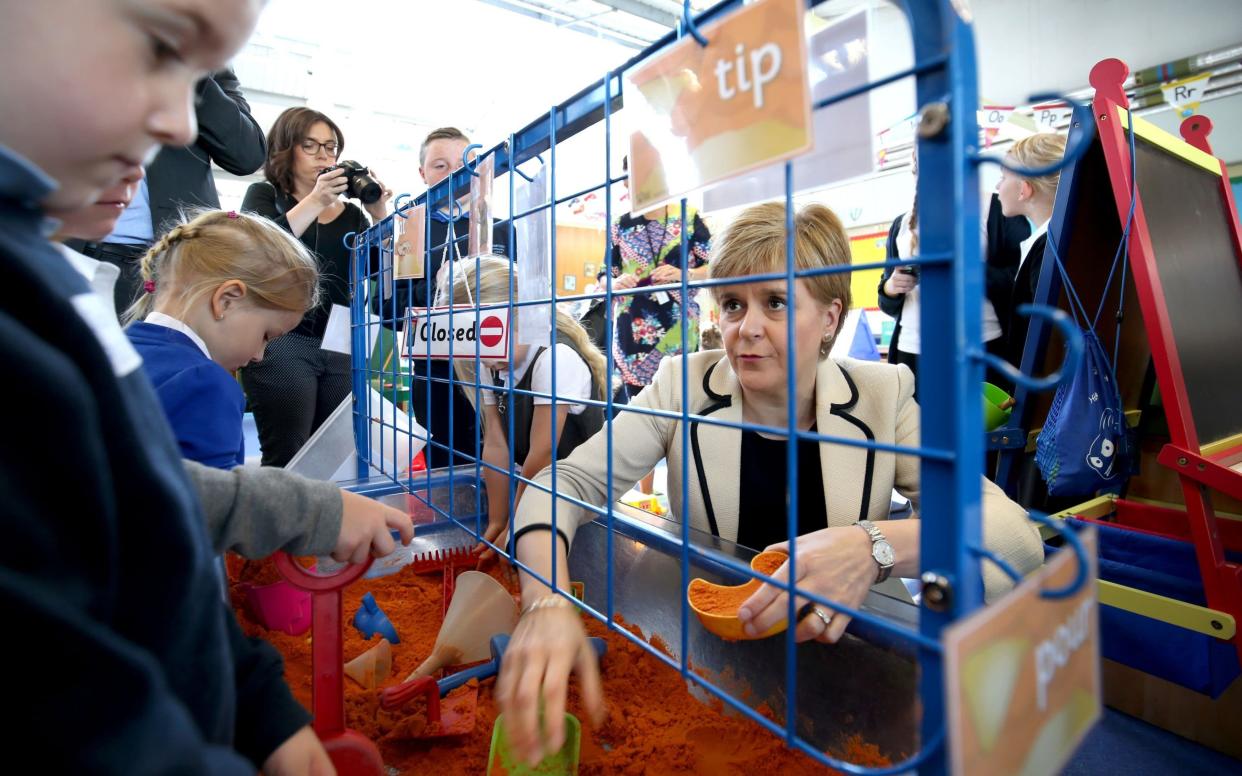£15 million of SNP attainment fund left unspent thanks to school staff shortage

Millions of pounds from Nicola Sturgeon’s flagship fund for driving up the performance of poor pupils are lying unspent because schools cannot find the staff they need to employ, according to an official assessment.
A Scottish Government-commissioned evaluation found almost £15 million of the £52 million handed to councils and schools during the first two years of the drive was not spent, with “difficulties in recruiting staff to posts” being blamed.
Local authorities singled out for extra help because they have high levels of deprivation spent only half of the £11.7million they were handed in 2015/16 and barely three-quarters of the £32.5 million they were given last year.
Some councils reported that a lack of available teaching staff had slowed their progress in increasing attainment, while others had been forced to change tack, “for example by scaling down the planned initiative.”
Teacher numbers have started to increase again over the past year but have still declined by around 3,500 since the SNP came to power in 2007. Many local authorities are struggling to recruit staff, with some schools even appealing to parents to help fill maths vacancies.
The assessment found that the Attainment Scotland Fund has laid “strong and solid foundations” for future progress on closing the attainment gap between rich and poor children, with a “hint towards a shift in the right direction.”
But it concluded: “Ultimately, without more evidence, at this stage we are unable to conclude the level of impact the fund may have had in raising attainment and closing the poverty related gap.”
The gap between the literacy scores for the wealthiest and most deprived P7 pupils narrowed by only 1.5 points between 2016 and 2017, which the report said was “not significant.”
Although nearly all (97 per cent) of surveyed headteachers expect the fund to lead to improvements over the next five years, major concerns were raised about whether this would be sustained in the longer term.
The assessment also found more of the money was being spent on improving literacy than numeracy, with some councils having no “interventions” to support the latter.

The evaluation was published the day after figures from last year’s exam results showed that the poorest pupils saw a two per cent increase in their attainment. However, they only achieved half the number of qualifications secured by the wealthiest children.
Ms Sturgeon has said she wants to be judged on her success in closing the attainment gap following years of SNP rule during which the Scottish education system tumbled down international league tables for literacy and numeracy.
Mr Swinney said the progress was “heartening” and action was being taken to address the “challenges” identified, but Labour warned that improvements were being undermined by staff shortages.
Iain Gray, the party’s education spokesman, said: “Until teachers’ pay and workload is addressed, that will continue.”
The Scottish Attainment Challenge, launched by the First Minister in February 2015, included targeted support for nine local authorities and 74 schools with the highest levels of deprivation.
A further £120 million started to be handed over directly to headteachers last year, with the sums linked to the number of P1 to S3 children eligible for free school meals.

The assessment found that the funding handed out during the first two years was mainly used on extra staff, training and materials.
It discovered evidence of “considerable progress” in the primary schools targeted but “less evidence” of improvement in secondary schools, where the scheme was rolled out later.
Among the main problems highlighted were getting parental support in deprived areas and recruiting staff. The report said the latter “put extra pressure on schools and impacted negatively on the success of planned interventions, leading to frustration and underspend.”
Almost a fifth (18 per cent) of headteachers surveyed “mentioned insufficient staffing”, while councils also highlighted difficulties in filling both existing and new posts.
While around 78 per cent said they thought the fund had increased attainment, almost a third (31 per cent) were unsure whether the improvements were sustainable. In particular, they mentioned “the context of local cuts and possible withdrawal of posts after the funding” finished.

 Yahoo News
Yahoo News 
